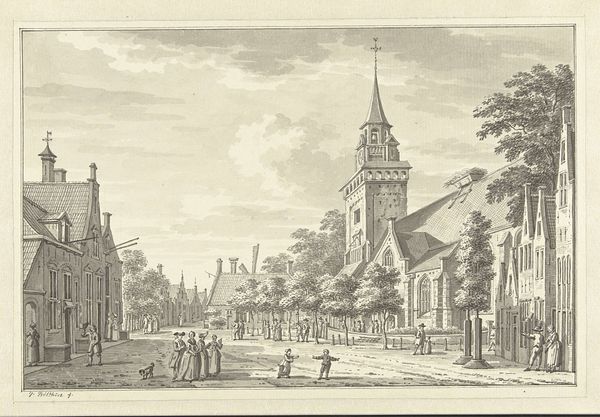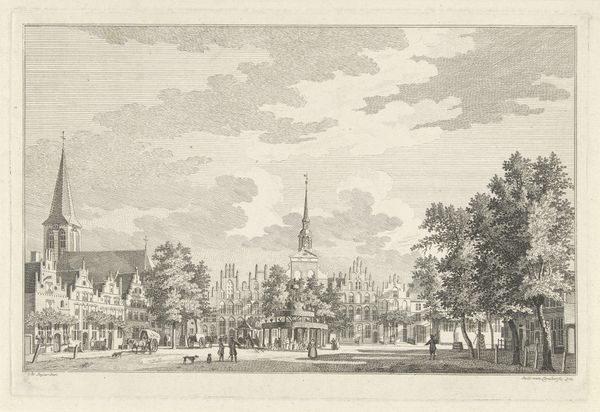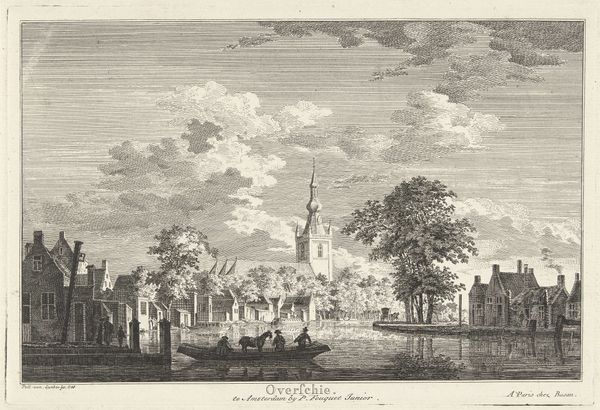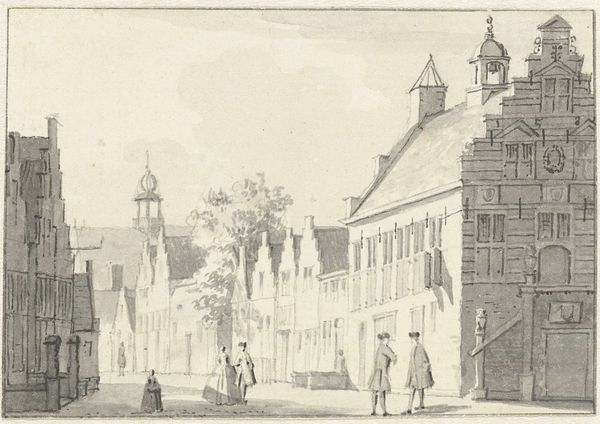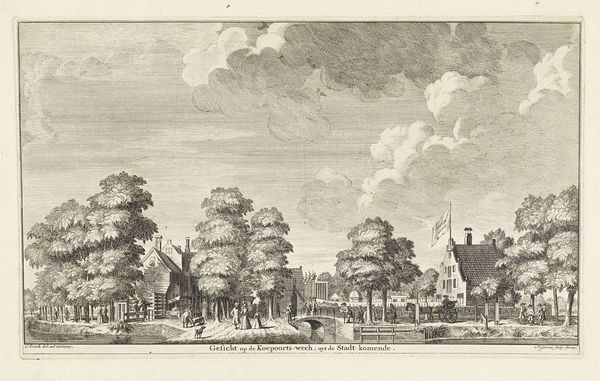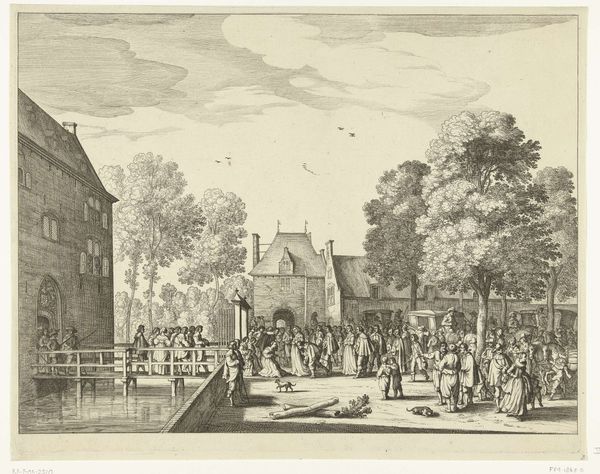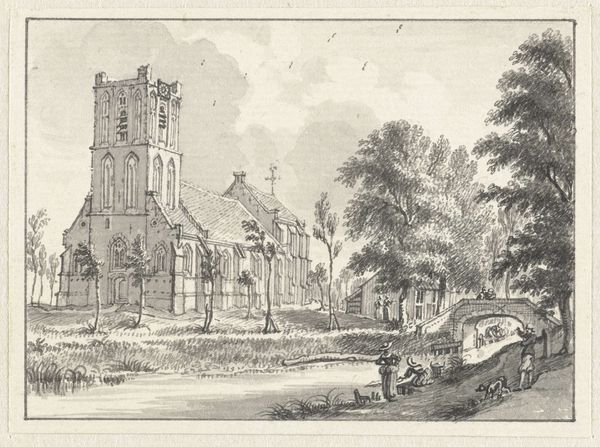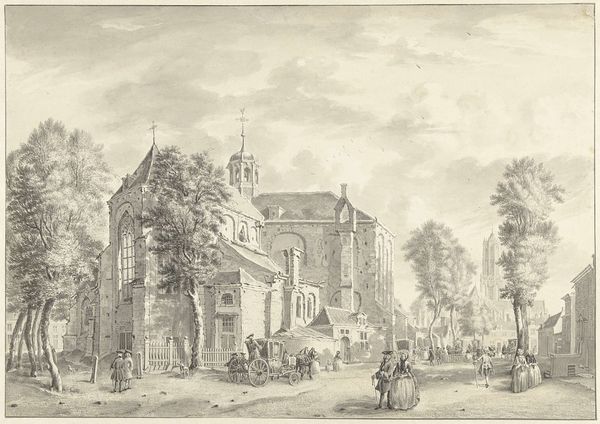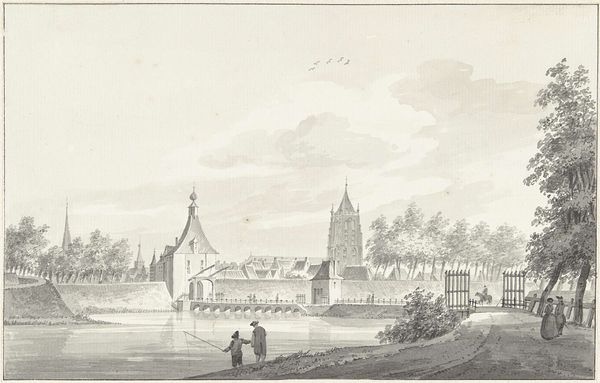
drawing, paper, ink
#
drawing
#
baroque
#
dutch-golden-age
#
landscape
#
paper
#
ink
#
cityscape
#
realism
Dimensions: height 205 mm, width 297 mm
Copyright: Rijks Museum: Open Domain
Editor: So, this is Jan de Beijer’s "View of the Market of Uerdingen," created in 1739 using ink on paper. It’s a lovely, quiet cityscape, almost dreamlike with its delicate lines and soft tones. What do you see in this piece? Curator: The town square…notice the spire—a dominant vertical axis. What do spires suggest to you beyond their architectural function? Churches served as the center of communities, not only as a house of worship but also for community gathering. The town hall also held its importance—and where the ‘authorities’ dictated the lives of people. De Beijer has created an interesting power-dynamic amongst these town infrastructures. Editor: That’s fascinating! I hadn't considered the buildings as symbols of societal power. I was more focused on the everyday scene – people chatting, dogs roaming around, just ordinary life. Curator: And consider this ‘everyday’ captured, a cultural memory infused with collective identity and continuity! Why would De Beijer highlight ordinary life and the infrastructures, during this specific time? Think about it in terms of what the cultural context was at this time… Editor: So, maybe it's a way of preserving a specific moment in time, idealizing a sense of order and community amidst the shifting sands of history? Thanks so much! This really shifts my perspective. Curator: Absolutely! Every element, from the architecture to the placement of figures, plays a part in the ongoing dialogue between the past and present, memory, and meaning.
Comments
No comments
Be the first to comment and join the conversation on the ultimate creative platform.
